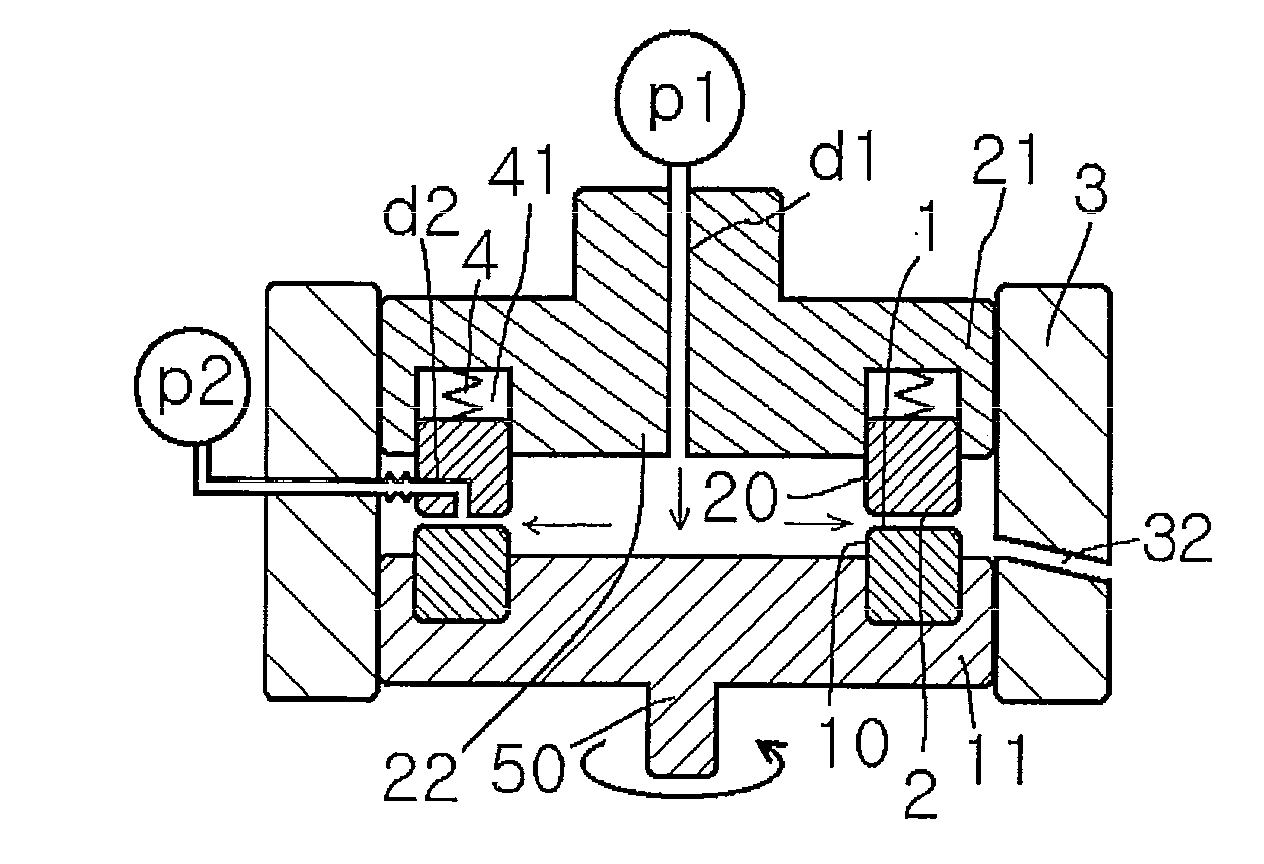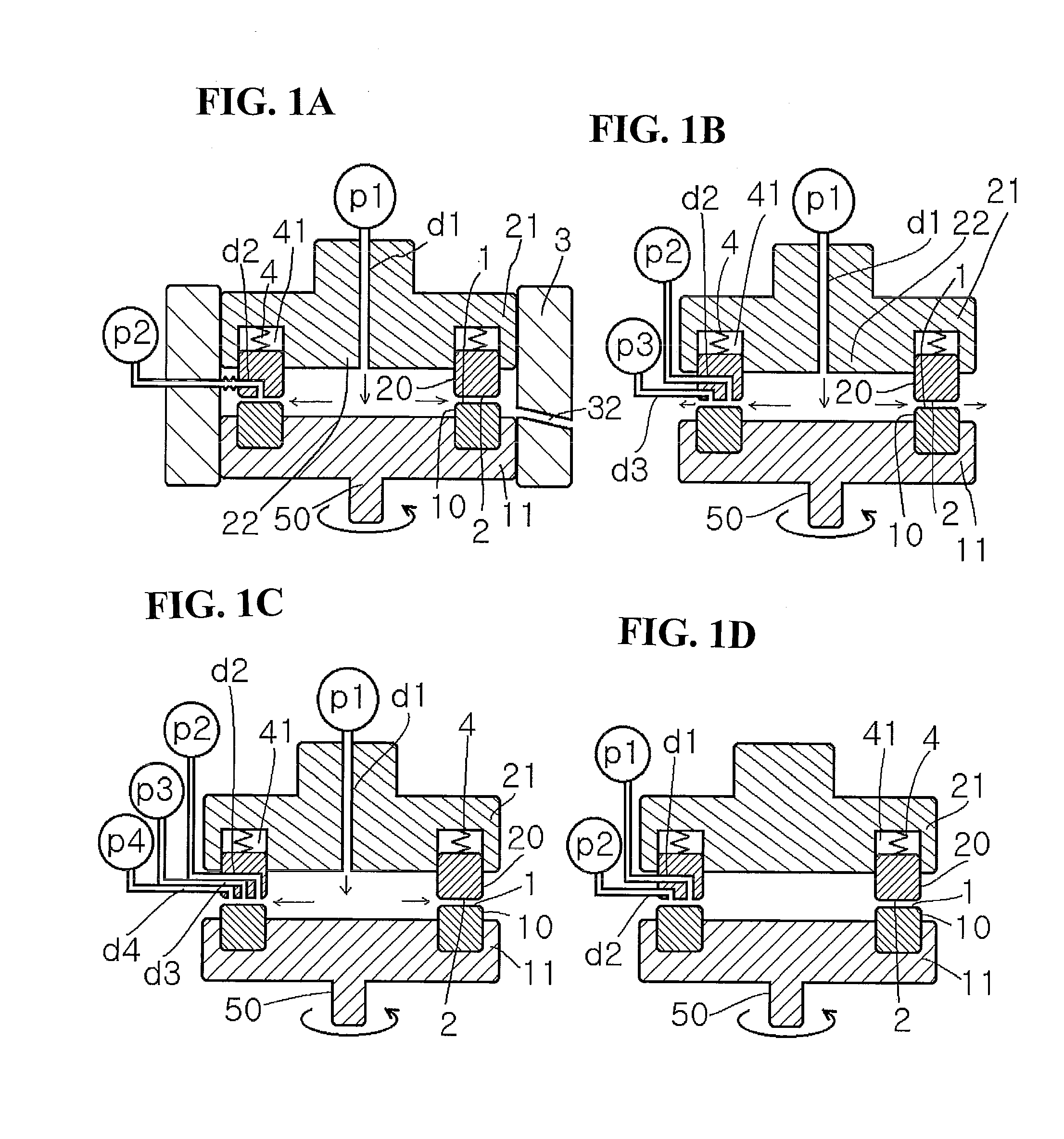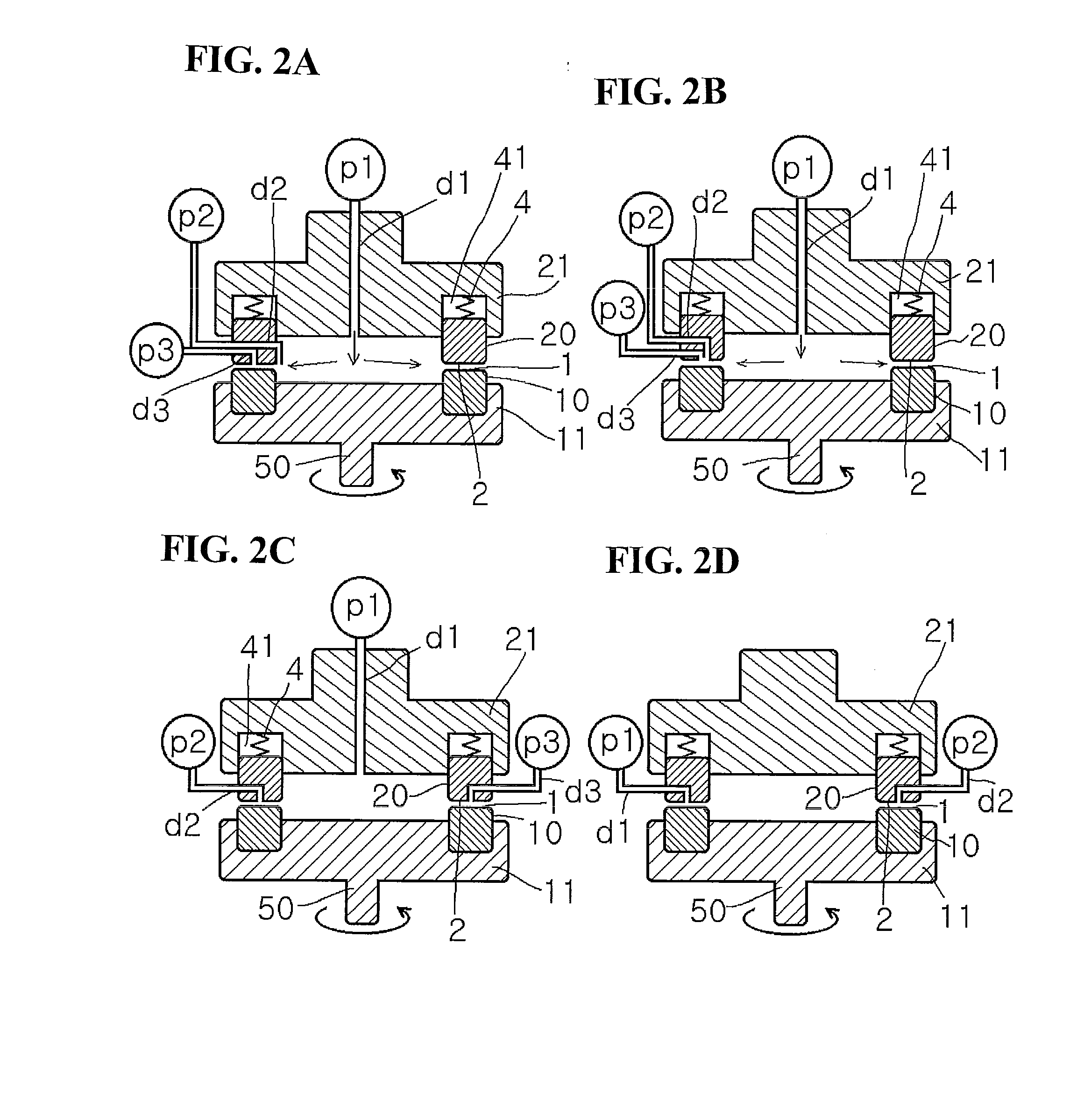Method for producing microparticles and the microparticles
- Summary
- Abstract
- Description
- Claims
- Application Information
AI Technical Summary
Benefits of technology
Problems solved by technology
Method used
Image
Examples
example 1
[0396]As a first fluid, 5% Tween 80 aqueous solution was sent from the center at a supply pressure / back pressure of 0.15 MPa / 0.01 MPa, at a revolution number of 500 rpm and at a sending solution temperature of 15° C., and 3% aciclovir aqueous solution at 85° C. was introduced as a second fluid at a rate of 10 mL / min. into the space between the processing surfaces 1 and 2. The first and second fluids were mixed with each other in the thin film, and an aciclovir microparticle dispersion solution was discharged from the processing surfaces. The temperature of the discharged fluid was 48° C.
[0397]When the particle size distribution of the aciclovir microparticles solution was measured with a particle size distribution measuring instrument utilizing a laser Doppler method (trade name: Microtrac UPA150, manufactured by Nikkiso Co., Ltd.), the average particle size was 88.6 nm.
[0398]The aciclovir dispersion solution was vacuum freeze dried, and the resulting powdery aciclovir microparticle...
PUM
| Property | Measurement | Unit |
|---|---|---|
| Particle size | aaaaa | aaaaa |
| Particle size | aaaaa | aaaaa |
| Temperature | aaaaa | aaaaa |
Abstract
Description
Claims
Application Information
 Login to View More
Login to View More - R&D
- Intellectual Property
- Life Sciences
- Materials
- Tech Scout
- Unparalleled Data Quality
- Higher Quality Content
- 60% Fewer Hallucinations
Browse by: Latest US Patents, China's latest patents, Technical Efficacy Thesaurus, Application Domain, Technology Topic, Popular Technical Reports.
© 2025 PatSnap. All rights reserved.Legal|Privacy policy|Modern Slavery Act Transparency Statement|Sitemap|About US| Contact US: help@patsnap.com



